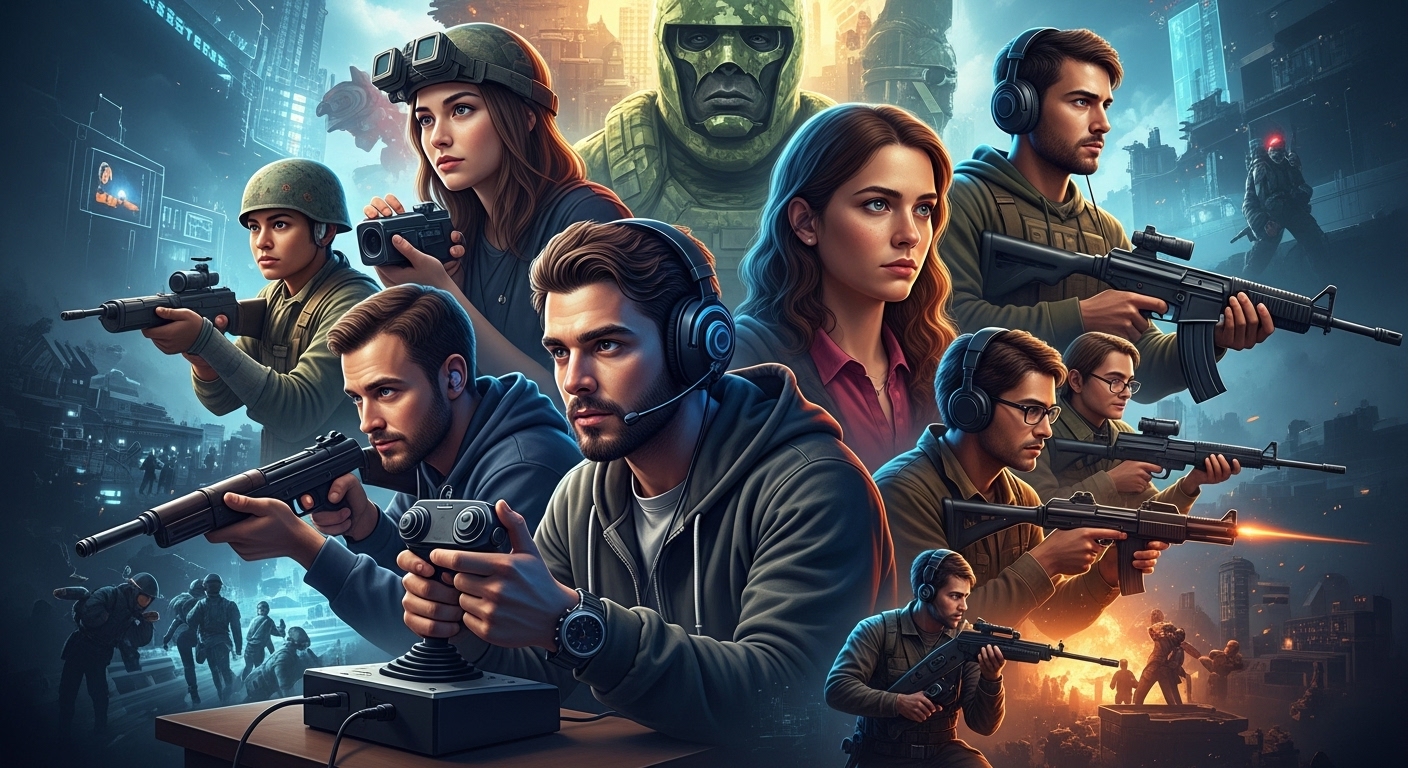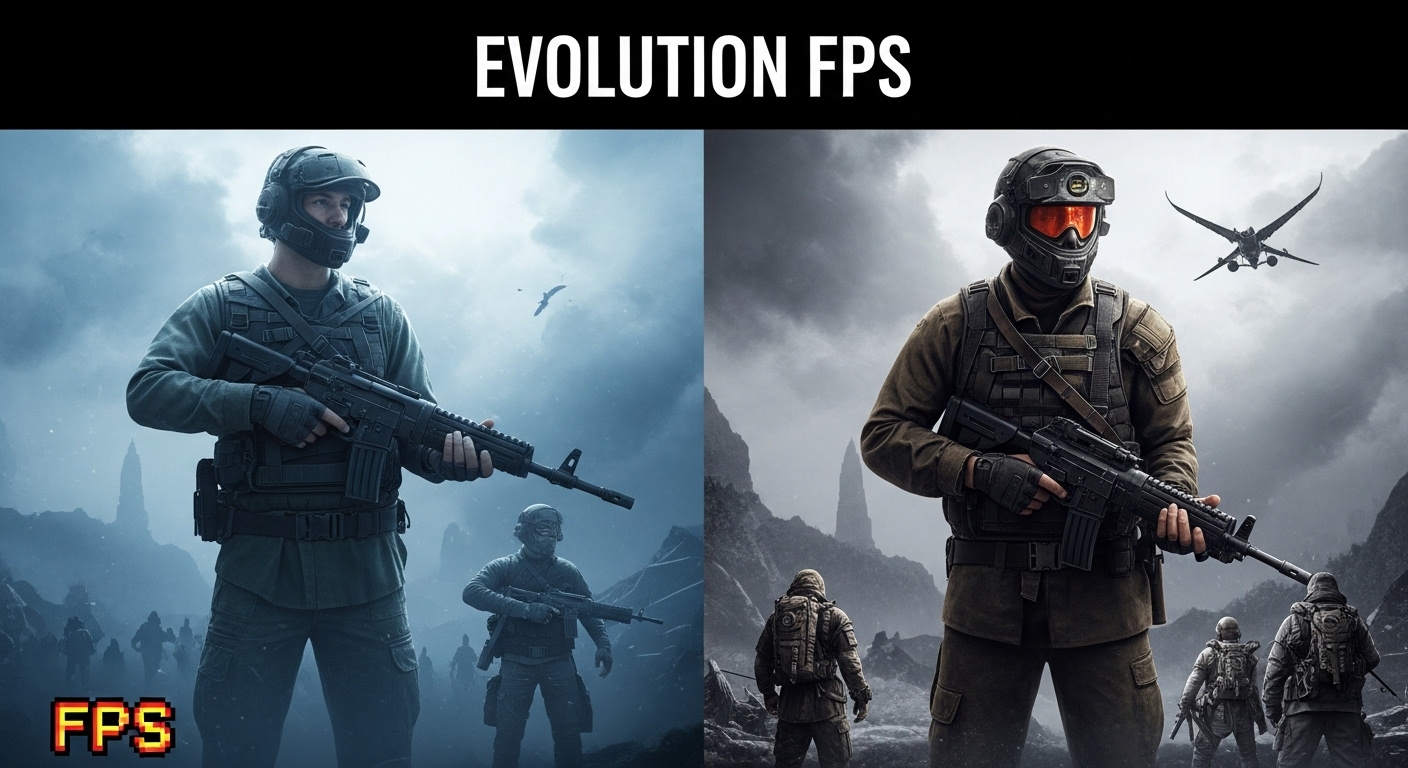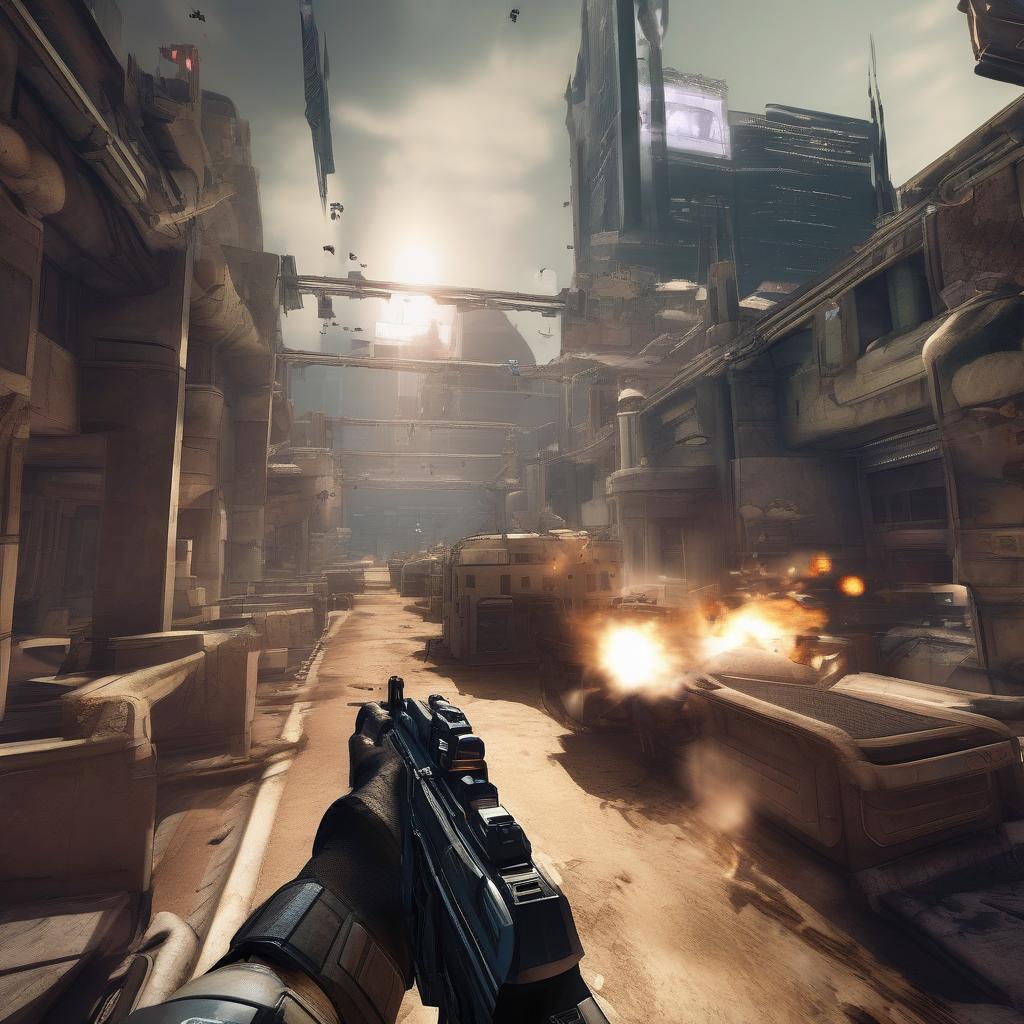First-Person Shooter games, or FPS games, have carved out a significant niche in the gaming world. Whether you’re dodging bullets in a digital landscape or strategizing with friends in a co-op mission, there’s something about the immediacy and immersion of FPS games that keeps us hooked. But, what exactly makes a game an FPS? Generally speaking, these games place you into the eyes of the character you’re controlling, giving you a first-person perspective of the action unfolding. This genre has evolved considerably over the years, incorporating elements from other gaming styles and engaging millions of players worldwide.
History of FPS Games
Let’s take a trip down memory lane. The origins of FPS games trace back to the early 1970s, but it wasn’t until the 1990s that they truly exploded in popularity. I mean, who hasn’t heard of Doom or Wolfenstein 3D? These pioneering games laid the groundwork for what would become a staple genre in the industry.
The Rise of Competitive Play
As technology advanced and multiplayer capabilities improved, FPS games became synonymous with competitive gaming. LAN parties were all the rage in the late 90s and early 2000s, and titles like Counter-Strike began shaping the eSports landscape, a space that’s only grown larger with time. You can see it now—the crowded rooms filled with players, the palpable tension, the camaraderie.
Components of a Classic FPS
What makes an FPS tick? Well, several components are essential:
- Perspective: As mentioned, the game is played from a first-person viewpoint.
- Weapons: A variety of guns and explosives are usually at the player’s disposal.
- Health System: Often involves either a regenerating health bar or health packs scattered throughout the game.
- Objectives: From capturing the flag to eliminating opponents, the objectives are abundant.
These elements, when woven together, create a gaming experience that is both engaging and challenging. But trust me, not all FPS games are created equal. Some are meticulously crafted, offering detailed storylines and immersive worlds, while others focus solely on the thrill of quick reflexes and fast-paced action.
Modern FPS Games and Their Impact
Fast forward to today, FPS games are more than just a way to pass the time. They’ve evolved into cultural phenomena. Look at games like Call of Duty, Battlefield, or Overwatch. These games have cinematic visuals, deep narratives, and multiplayer modes that are more complex than a soap opera series. There’s a whole world here, with its own language and culture.
The Technology Behind FPS
Part of what makes these games so captivating is the technology behind them. Advanced graphics engines render stunningly realistic environments, while sophisticated AI ensures enemies are as challenging as they are in real life. Virtual reality is the latest frontier, pushing FPS games into even more immersive territory. It’s wild to think about where this might go in the next decade or so.
Social Aspects
FPS games have also become a way to connect with others. Multiplayer modes encourage teamwork and strategy, fostering communities both online and offline. It’s not just about the game itself anymore; it’s about the friendships and rivalries that develop, the memes that emerge, the streams and YouTube channels that flourish. This social aspect is huge. And gaming conventions? Let’s not even start on how massive those have gotten.
Challenges and Criticisms
But not everything’s rosy in the world of FPS games. There’s a boatload of controversy surrounding violence in video games. Critics argue that the immersive nature of FPS games could desensitize players to violence. Some folks agree, others vehemently disagree, pointing to studies showing no direct correlation. It’s a heated debate, one that likely won’t be resolved anytime soon.
The Balance of Challenge and Accessibility
One of the ongoing challenges developers face is the balance between making games challenging enough to be engaging but not so difficult that new players feel alienated. It’s no easy task. The learning curve in games like Dark Souls can be steep, and not everyone enjoys getting obliterated in the first ten minutes.
The Future of FPS
What’s next for FPS games? It’s hard to say for sure, but trends suggest a continued push towards virtual reality and augmented reality experiences. There’s also a growing focus on storytelling and character development. These aren’t just shoot-em-ups anymore; they’re intricate tales woven into a tapestry of pixels and code.
If you’re curious about how these changes might affect the gaming industry or want to dig deeper into terms and policies around gaming, check this link. It’s a useful resource for understanding the legal landscape as it evolves alongside technological advances.
Indie FPS Games
Let’s not forget the indie scene. Smaller developers are making waves with unique takes on the FPS formula. These games often experiment with mechanics, aesthetics, and narratives in ways big studios might shy away from. Who knows, the next big thing might just come from a tiny studio working out of someone’s basement.
FAQs
- What’s the difference between FPS and TPS games?
TPS stands for Third-Person Shooter. The main difference is the camera perspective; TPS games are played from over the shoulder, not through the character’s eyes.
- Can playing FPS games improve my reflexes?
Some studies suggest that FPS games can enhance hand-eye coordination and reaction times. Your mileage may vary, though.
- Are there any non-violent FPS games?
Yes, some FPS games focus on exploration or puzzle-solving rather than combat.
- Why do people get motion sickness from FPS games?
It’s often due to the field of view and frame rate. Adjusting these settings can help reduce discomfort.
- What’s the best way to get better at FPS games?
Practice, practice, practice. Watching tutorials and analyzing your gameplay can also be beneficial.
So, that’s the scoop on FPS games. They’re a fascinating blend of technology, art, and community, constantly evolving yet always retaining that core appeal—putting you right in the thick of the action.



